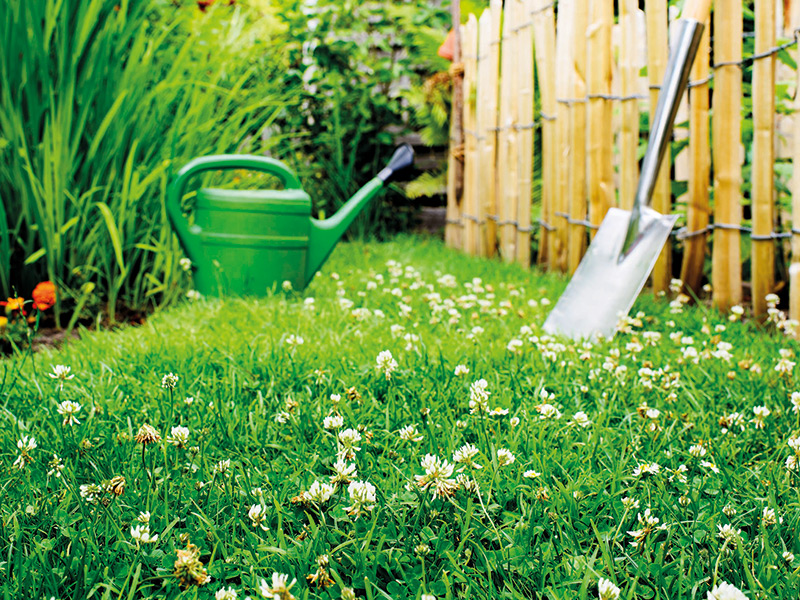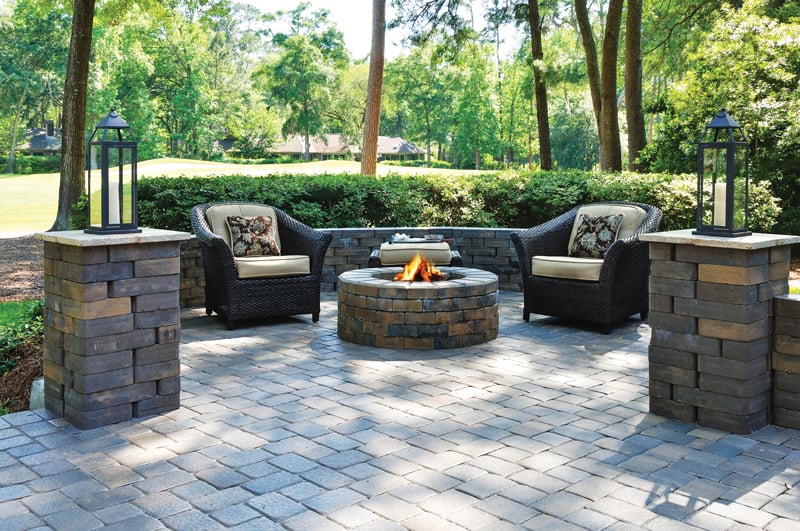Where the Grass Is Greener
Native plant species bring backyards to life with biodiverse ecosystems

For decades, the traditional green lawn has been a standard.
Homeowners and landscapers have spent endless resources and spring and summer hours dedicated to achieving that clean, green appearance.
But environmental scientist Mary Gutierrez will tell you that any lawn that requires that much maintenance is just not natural.
“I know it’s difficult for people because socially or culturally we’ve been trained, ‘keep your lawns short, keep it manicured,’” Gutierrez said. “But there’s a way to have your lawn looking natural without looking like the house has been abandoned.”
A biodiverse lawn introduces a myriad of species native to Florida and the U.S.
“Typically, biodiverse lawns take less maintenance,” Gutierrez said. “They require less water. You don’t have to mow them as often, if at all. You don’t have to apply pesticides or herbicides.”
A mix of native grasses and clover is ideal to produce a full, lush lawn. Bermuda and Pensacola Bahia do well in Northwest Florida’s loamy soil. Several clover species can help fill in those patchy areas and reintroduce nitrogen and other nutrients into depleted soil. Most clovers are low-growing and some bloom flowers that attract pollinators. Crimson clover will produce vibrant, impressive blooms but needs to reach a height of about 4–6 inches before blooming.
Once established, clover lawns require less watering and fertilization and will naturally stamp out aggressive and invasive species. Gutierrez said to avoid invasive clover lookalikes including the dollarweed. Seed in the fall and early spring for best results, watering frequently during the germination stage.
Gutierrez suggests not cutting your lawn until it’s reached at least 1½ inches or up to 3 inches in height.
“That would still look good and presentable, but you’re still allowing for bugs and insects,” she said.
Many insect species are integral to a healthy biodiverse lawn and will benefit from habitats created by intact grass canopies or clippings, mulch and leaves.

↑ Native flowering shrubs, like the firebush pictured above, bring color to green spaces and attract pollinators. Be sure to consult your hardiness zone before planing. Most of the Panhandle falls into zone 8B, but coastal Northwest Florida falls into zone 9A. Photo by iStock / Getty Images Plus: Capri Fedler
“We have a tendency to think those are just the pests. But there are some insects, like fireflies, that actually incubate underneath the soil, and then they come up after that incubation period,” Gutierrez explained. “They’re good because they eat gnats and mosquitoes, so we need them. But if we’re maintaining the lawn too short, if we’re using chemicals on the lawn, we’re actually killing them.”
When it comes to worries of weeds, Gutierrez says, don’t.
“Growing up, we never considered dandelions a weed,” she said. “I believe they’ve gotten a bad rap in being categorized as that.”
While the dandelion and others like spiderwort are quick to spread, Gutierrez said that doesn’t mean they’re invasive, and they can prove productive in attracting pollinators to your lawn.
Non-native, invasive plants should be identified and removed down to the root, by hand or with a garden tool, and disposed of away from the yard to prevent continued spread. Though native, other fast spreaders, like pointy sandspurs, can be a nuisance and can be treated the same way.
Gutierrez recommends removing non-native and unwanted species in the spring before the season’s first mow to discourage spreading. Pesticides and herbicides, she said, should not be used.
“We don’t want to disturb bees, butterflies and other insects and pollinators. And we don’t want to have adverse impacts on ourselves,” Gutierrez said. “A lot of these chemicals have carcinogens in them, so we really need to be careful.”
For flower gardens, Gutierrez said native is always best. If implementing others, use caution, and always be sure to con-
sult your hardiness zone when selecting seeds
and plants.
Florida’s state wildflower, tickseed, blooms heartily, as do coneflowers, marigolds, blazing star (gayfeather) and coralbean. Too, flowering shrubs including azalea, hibiscus and firebush thrive with vibrant blooms.
While some non-native ornamentals do well in our climate and prove fairly harmless, others have reputations as wildly invasive and should be avoided. The non-native, vining exotic wisteria — popular for its drooping purple blooms that look nice climbing a trellis or pergola — is vigorously invasive.
“People love to plant it,” Gutierrez noted. “Most people plant these because they’re fast growing. But they’re fast growing because they’re invasive.”
Gutierrez said others to avoid include Brazilian peppertree, skunk vine and English ivy.
When in doubt, Gutierrez emphasized, go native.
“It goes back to doing what’s right for the Florida environment,” she said.
Your backyard will be better for it, too.
Meet the Expert
Mary Gutierrez holds a bachelor’s degree in earth and atmospheric sciences and a master’s degree in sustainable community development. She’s worked for the Florida Department of Environmental Protection and as an environmental planner. Gutierrez runs two nonprofits, Earth Ethics and Earth Action, with a mission to engage and educate the public and increase environmental awareness.
Attracting Fireflies
Environmental scientist Mary Gutierrez said fireflies were once more common in our region and that human-impact factors, including light pollution and overcrowding, have played a role in warding off the lightning bugs. To attract them to your yard, increase your native plant species. Milkweed is especially productive in attracting the creatures and will attract pollinators, too.

